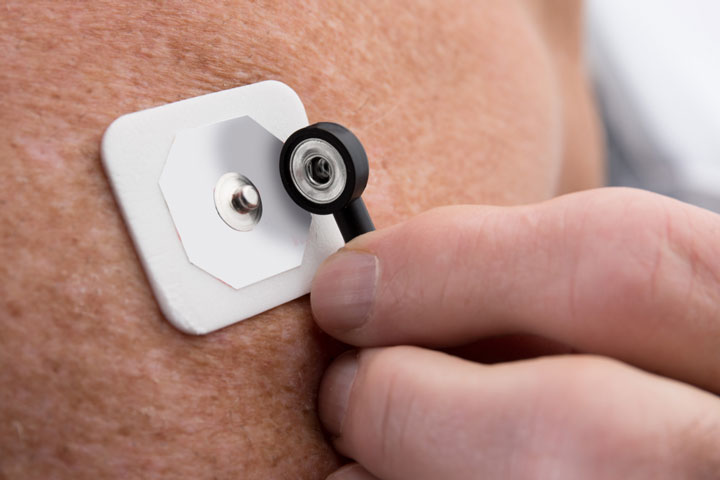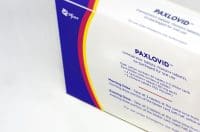Editor’s note: This is a web exclusive article for the July 2021 issue of American Nurse Journal.
Strategies for nurses
Continuous cardiac monitoring or telemetry is commonly used to detect lethal arrythmias in patients outside of critical care units. However, overusing telemetry can lead to nonactionable alarms, which distract from care and jeopardize patient safety. Some argue that telemetry offers a perception of safety that isn’t evident in the literature. For example, according to Mohammad and colleagues, no outcome differences exist between patients with in-hospital cardiac arrest in non-critical care areas that were monitored on telemetry and those not on telemetry.
1Facebook Digital Abstract 7.2021 TelemetryThe American Heart Association (AHA) has developed evidence-based guidelines for appropriate telemetry use. The practice standards include a rating system that indicates three categories of patients and cardiac monitoring:
- Class I: High indication for monitoring
- Class II: May benefit, but not essential
- Class III: No therapeutic benefit
Frontline nurses and nursing leaders can implement telemetry reduction strategies to improve value and quality of care. Primary interventions to decrease telemetry use include providing staff education, developing discontinuation criteria, integrating telemetry orders into daily communications, and hardwiring AHA standards into the organization’s ordering practices.
Staff education
Many nurses are unaware that AHA guidelines for appropriate telemetry use exist. Post the guidelines on a nursing communication board and place a link to the guidelines (ahajournals.org/doi/10.1161/CIR.0000000000000527) and related education tools on the organization’s intranet.
Education about the guidelines can be particularly helpful for nurses caring for patients in areas that typically overuse telemetry, such as medical, surgical, and intermediate care units. Nurse educators can emphasize the most common nonessential (Class III) uses for telemetry, including stable atrial fibrillation, GI bleeding, hypoxia, and anemia. Telemetry commonly is used to monitor hemodynamic stability in non-cardiac patients, but it can’t take the place of frequent assessment and vital sign measurements. Although more research is indicated for the general medical population, the data available demonstrate a low incidence (less than 2%) of clinically important arrythmias. Further discussion of specific patient populations and scenarios are outlined in the AHA guidelines.
Discontinuation criteria
Creating discontinuation guidelines can help nurses decide whether a patient is appropriate for continued cardiac monitoring. Create an interprofessional team (including members from hospital medicine, clinical leads and charge nurses, cardiologists and cardiology mid-level providers, telemetry technicians, and nursing management) to produce a standard list of qualifications that allow patients to be removed from telemetry. Established criteria offer a foundation for team members to make evidence-based decisions. Based on these criteria, a nurse-led discontinuation protocol can be developed to further appropriate use efforts. At a minimum, standards that warrant discontinuation are absence of actionable alarms and no detection of arrhythmias. (See Examples of discontinuation criteria.)
Examples of discontinuation criteria
Discontinuation criteria can support nurses when considering whether a patient should be removed from telemetry.
● Stable rhythm without the presence of significant changes in 24 hours
● Negative troponins (cardiac enzymes) ×2, no ST-segment changes for 24 hours, no chest pain
● Discontinuation of QT-prolonging drugs
● Absence of requirement for I.V. medications for rate or rhythm control
● Discontinuation of alcohol withdrawal protocol
● Release from poison control for drug overdose
● Electrolyte correction (especially in potassium and magnesium)
● No significant hemodynamic changes (heart rate <60 beats per minute, heart rate >100 beats per minute, systolic blood pressure <90 mmHg)
● Stable on diuretic therapy for heart failure
● Change in patient status to comfort care measures
● Patient nonadherence or patient refusal
● Absence of actionable alarms within a desired time frame (for example, 12 or 24 hours)
● Continuous pulse-oximetry ordered only for monitoring oxygen levels
Daily communications
Quality control measures frequently include discussions of urinary catheter use, fall risk interventions, and central line infection prevention, but seldom do they include telemetry use. Nurses should note which patients are on telemetry by way of report or inclusion on a safety huddle board. Next, during rounds, the nurse can ask the attending physician, “Does this patient require telemetry?” Supporting the need for discontinuation can include nursing assessment and that the patient meets discontinuation criteria.
A clinical decision-making tool or checklist created in collaboration with stakeholders on the interprofessional team can support nurses when approaching physicians or in a nurse-led discontinuation protocol. Nurses can use the tool to critically examine a patient’s situation and advocate for continuation or discontinuation as appropriate.
The nurse should begin by considering the indication for telemetry (arrythmia detection, ST-segment monitoring, QT-lengthening) and then review patient information, assessments, lab results, medications, and telemetry rhythm strips. Next, the nurse should ask: Is there still an indication for telemetry? Is the patient adherent? How long does the patient require monitoring? Can telemetry be discontinued? After careful consideration, the nurse can communicate with the attending physician about discontinuation orders. If telemetry is discontinued, continual observation and assessment will take place for any change in patient status. Afterward, reflecting on the decision-making process can help inform future decisions.
Hardwire the guidelines
According to Yeow and colleagues, incorporating AHA guidelines into the EHR provides the greatest success in reducing telemetry use. For example, hard-stops in the ordering process will force the provider to consider whether telemetry is needed.
Protocols or order sets that have telemetry pre-selected should be revised with options that include 12, 24, or 48 hours. At the end of that time, the care team can assess whether telemetry should be continued based on the patient’s clinical status. According to the AHA guidelines, an “until discontinued” or “until discharged” option isn’t clinically indicated for most patients outside of critical care units.
The ordering provider should be required to input a clinical indication, which presents an ideal opportunity to choose from a list based on AHA classes. When “Other” is an option, providers should be prompted to enter a reason, which can be reviewed later for quality improvement data.
Eliminating automatic telemetry orders and “until discontinued” options gives providers the opportunity to evaluate clinical indication for individual patients. The key is creating an intervention that’s the least disruptive to providers’ workflow.
In addition, telemetry should be included in a patient’s status board along with date of order, length of application, and clinical indication chosen by the ordering provider. Pop-up reminders can encourage providers to address telemetry status, although pop-ups may be ignored because so many reminders for other issues exist in many EHRs.
Some organizations may have an audit process for telemetry information that’s assigned to telemetry technicians or quality assurance personnel. However, making telemetry information easily accessible can aid caregivers in auditing telemetry data. This process also will help identify patients who should be on telemetry but aren’t.
Considerations for success
Organizations will reap many benefits when they reduce telemetry use. Revising the process for ordering telemetry and assessing clinical necessity, creating buy-in from key stakeholders, forming a task force to decrease telemetry use, and framing the AHA standards as evidence-based guidelines rather than protocol can ease tensions and resistance from providers. The focus should always be on providing high-quality healthcare while integrating appropriate resource allocation and informed decision-making.
Rachel Rotramel works in the cardiovascular unit at Decatur Memorial Hospital in Decatur, Illinois.
References
Chahine J, Thapa B, Gosai F, et al. Interventions to decrease overuse of cardiac monitoring (telemetry) when transitioning from the intensive care unit to the regular nursing floor. Cureus. 2019;11(3):e4311. doi:10.7759/cureus.4311
Chen S, Palchaudhuri S, Johnson A, Trost J, Ponor I, Zakaria S. Does this patient need telemetry? An analysis of telemetry ordering practices at an academic medical center. J Eval Clin Pract. 2017;23(4):741-6. doi:10.1111/jep.12708
Mohammad R, Shah S, Donath E, et al. Non-critical care telemetry and in-hospital cardiac arrest outcomes. J Electrocardiol. 2015;48(3):426-9. doi:10.1016/j.jelectrocard.2015.02.003
Perrin K, Ernst N, Nelson T, Sawyer M, Pfoh E, Cvach M. Effect of a nurse-managed telemetry discontinuation protocol on monitoring duration, alarm frequency, and adverse patient events. J Nurs Care Qual. 2017;32(2):126-33. doi:10.1097/NCQ.0000000000000230
Rizvi W, Munguti CM, Mehta J, Kallail KJ, Youngman D, Antonios S. Reducing over-utilization of cardiac telemetry with pop-ups in an electronic medical record system. Cureus. 2017;9(5):e1282. doi:10.7759/cureus.1282
Sandau KE, Funk M, Auerbach A, et al. Update to practice standards for electrocardiographic monitoring in hospital settings: A scientific statement from the American Heart Association. Circulation. 2017;136(19):e273-344. doi:10.1161/CIR.0000000000000527
Stoltzfus KB, Bhakta M, Shankweiler C, Mount RR, Gibson C. Appropriate utilisation of cardiac telemetry monitoring: A quality improvement project. BMJ Open Qual. 2019;8(2):e000560. doi:10.1136/bmjoq-2018-000560
Yeow RY, Strohbehn GW, Kagan CM, et al. Eliminating inappropriate telemetry monitoring: An evidence-based implementation guide. JAMA Intern Med. 2018;178(7):971-8. doi:10.1001/jamainternmed.2018.2409



















2 Comments. Leave new
Nancy,
These patients would likely benefit from telemetry in the acute care setting and may even qualify for longer term monitoring with use of devices such as loop recorders or Holter monitoring. However, for cases such as syncope, once evaluated, may only be in hospital for 24 to 48 hours. The patient population you mention are often in the class II category, in which there may be benefit for telemetry. The discontinuation criteria is aimed primarily for medical-surgical patients that are often placed on telemetry without a strong clinical indication. Thank you for your response.
While I agree that extended telemetry use is unnecessary, I’m concerned by the perception of this article. Cryptogenic strokes for instance can benefit for longer use, but not indefinite. Syncopal patients would benefit not to mention those patients who we pick something up that is new and potentially serious.